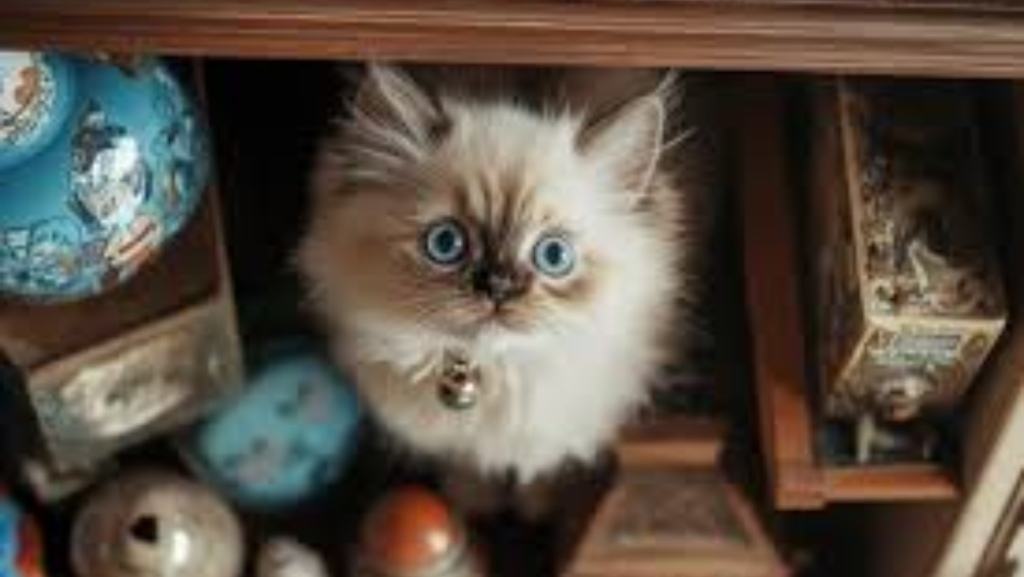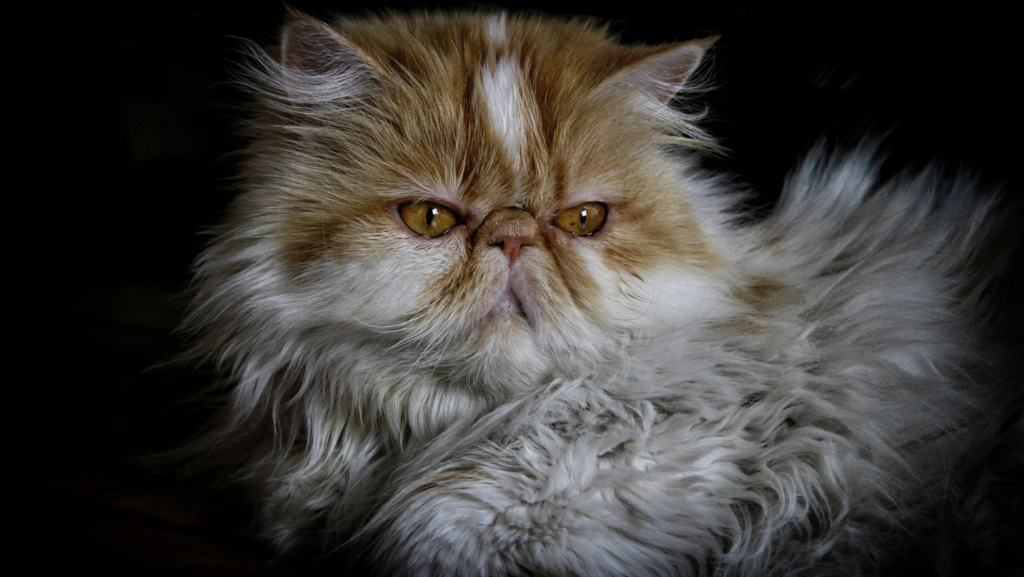Persian cat breed are one of the most beloved feline breeds, known for their distinct appearance and gentle temperament. With their luxurious fur, expressive eyes, and sweet personalities, Persian cats have captured the hearts of cat lovers worldwide.
In this comprehensive guide, we’ll explore everything you need to know about Persian cats, including their history, physical characteristics, grooming needs, and behavior.
Owning a Persian cat can be a rewarding experience, but it also comes with its responsibilities. Understanding their unique needs will help you provide the best care for your feline companion.
Whether you’re considering adopting a Persian cat or you’re already a proud owner, this article will serve as your go-to resource for all things related to these beautiful cats.
So, if you’re ready to learn more about the charming world of Persian cats, keep reading to discover valuable insights and tips to enhance your journey as a cat parent.
1. History

The history of the Persian cat dates back to the 1600s when these elegant felines were first introduced to Europe from Persia, now known as Iran. Initially, they were highly regarded for their luxurious fur and unique appearance.
Over the years, Persian cats became popular among the aristocracy and were often featured in paintings and royal portraits.
As their popularity grew, Persian cats were selectively bred for specific traits, which led to the development of various color patterns and fur textures. The breed continued to evolve, and in the late 19th century, Persian cats were officially recognized by cat registries.
Their distinctive features, including a broad head, short muzzle, and long, flowing coat, contributed to their status as one of the most iconic cat breeds. Today, Persian cats are still highly sought after, loved for their beauty and gentle nature.
Their rich history has made Persian cats a symbol of elegance and sophistication. Their presence in royal households and art throughout the ages reflects their esteemed status. As a result, Persian feline continue to be cherished companions and show cats in various competitions around the world.
2. Physical Characteristics
As a result, Persian cats continue to be cherished companions and show cats in various competitions around the world. are known for their striking physical characteristics. They possess a round face with a short, flat muzzle, giving them an adorable appearance.
Their large, expressive eyes come in a variety of colors, including copper, blue, and green, adding to their charm.
One of the most distinctive features of Persian cats is their long, luxurious fur, which requires regular grooming to prevent matting.
Their bodies are sturdy and muscular, with short legs that contribute to their unique silhouette. Persian cats come in a wide range of colors and patterns, making each cat unique and special.
In addition to their overall appearance, Persian cats are known for their large, rounded heads and full cheeks, which enhance their adorable look.
The breed’s eye color can be a significant factor in their beauty, with certain colors, like deep blue, being particularly sought after. This combination of features gives Persian cats their regal and dignified presence, making them stand out in any setting.
3. Temperament and Behavior
The temperament of Persian cats is generally calm and affectionate. They are known for their sweet and gentle nature, making them excellent companions for families and individuals alike.
Persian cats are typically not as active as some other breeds; instead, they enjoy lounging around the house and basking in the sun.
Despite their laid-back demeanor, Persian cats can be playful and enjoy interactive playtime with their owners. They tend to form strong bonds with their human companions and thrive on attention and affection.
This breed is generally good with children and other pets, making them a great addition to any household.
Persian cats are often described as “lap cats,” enjoying close physical contact with their humans. They may follow you around the house, seeking your companionship and affection.
Their calm nature makes them particularly suited for indoor living, as they prefer the security of their home environment over the hustle and bustle of outdoor life.
4. Grooming and Care

Grooming is one of the most important aspects of caring for a Persian cat. Their long fur requires regular brushing to prevent tangles and mats.
It’s recommended to groom your Persian cat at least two to three times a week, but daily grooming may be necessary during shedding seasons.
In addition to brushing, regular bathing is also essential for keeping their coat clean and healthy. Use a gentle cat shampoo and make sure to dry them thoroughly afterward.
Pay special attention to their eyes, as Persian cats can be prone to tear staining. Wiping their eyes with a soft cloth can help keep this area clean.
Establishing a grooming routine early on will help your Persian cat get used to the process and make it a more enjoyable experience for both of you.
Consider investing in high-quality grooming tools, such as a slicker brush and a wide-toothed comb, to make the job easier. Regular grooming not only maintains their beautiful coat but also provides an opportunity for bonding with your cat.
5. Health Concerns
Like all breeds, Persian cats are prone to certain health issues. Some common concerns include brachycephalic airway syndrome, which can affect their breathing due to their flat faces. Additionally, Persian cats may be susceptible to dental problems and polycystic kidney disease (PKD).
Regular veterinary check-ups are crucial for monitoring your Persian cat’s health. Keeping up with vaccinations, dental care, and a proper diet can help prevent many health issues. If you notice any unusual behaviors or signs of illness, consult your veterinarian promptly.
Being proactive about your Persian cat’s health can make a significant difference in their quality of life. Regular dental cleanings and an appropriate diet can help mitigate some of the breed-specific health risks.
Understanding your cat’s medical history and maintaining open communication with your veterinarian will ensure your Persian cat stays healthy and happy.
6. Nutrition Needs
Providing a balanced diet is vital for the overall health of your Persian cat. Look for high-quality cat food specifically formulated for their age and health needs. Persian cats may benefit from diets that promote skin and coat health due to their long fur.
Always ensure your Persian cat has access to fresh water and monitor their weight to prevent obesity. Consult your veterinarian for personalized dietary recommendations to ensure your feline friend stays healthy and happy.
In addition to commercial cat food, you can also incorporate wet food into their diet to promote hydration and enhance their overall nutritional intake.
Be cautious about feeding your Persian cat human food, as many common ingredients can be harmful to cats. Educating yourself on what is safe and beneficial will help you provide a well-rounded diet for your beloved Persian cat.
7. Training Your Persian Cat

Training a Persian cat can be a delightful yet unique experience. Unlike some other breeds, Persians are known for their calm demeanor and affectionate nature, which can be advantageous when it comes to training.
However, it’s essential to remember that these cats have their own personalities and preferences, so patience and consistency are key. Here are some effective strategies to help you train your Persian cat successfully.
One of the first steps in training your Persian cat is establishing a strong bond with them. Building trust will make your cat more receptive to training. Spend quality time playing and interacting with your cat, using toys they enjoy.
Engage them with gentle petting and talk to them in a soothing voice. This foundation of love and trust will create a positive environment, making training sessions more effective and enjoyable for both of you.
When it comes to training techniques, positive reinforcement is highly effective for Persian cats. This approach involves rewarding your cat with treats, praise, or playtime whenever they perform the desired behavior.
For example, if you want your Persian cat to come when called, start by using their name and rewarding them when they approach you. This method not only encourages good behavior but also strengthens the bond between you and your feline friend.
Litter box training is another important aspect of training your Persian cat. Most cats have a natural instinct to use a litter box, but it’s essential to provide a clean and accessible area for them.
Choose a litter box that is appropriately sized for your Persian cat and place it in a quiet, private location. Regularly scoop the litter and change it frequently to keep it fresh.
If your cat has accidents, avoid punishing them, as this can create fear and confusion. Instead, clean the area thoroughly and continue to encourage the use of the litter box.
Socialization is crucial for Persian cats, especially if you have other pets or children in the home. Gradually introducing your Persian to different environments, sounds, and people will help them become well-adjusted and confident.
Use treats and praise to reward your cat for positive interactions with new experiences. Always supervise interactions with other pets to ensure your Persian cat feels safe and secure, gradually increasing exposure to different situations.
Lastly, keep in mind that training should be a fun and rewarding experience for both you and your Persian cat. Set realistic goals and be patient with their progress.
Short, frequent training sessions of about five to ten minutes are more effective than longer sessions, as they help maintain your cat’s attention and enthusiasm. Remember to celebrate small successes, as every step forward is a sign of progress in your training journey.
In conclusion, training your Persian cat requires a blend of patience, love, and positive reinforcement. By establishing trust, using effective training techniques, and ensuring socialization, you can create a well-behaved and happy companion. Enjoy the journey of training your Persian cat, and cherish the unique bond you’ll develop along the way.
8. Persian Cats and Families
Persian cats are known for their friendly and gentle nature, making them great companions for families. They tend to get along well with children, especially if they are raised together. Teaching children how to interact gently with cats is essential to ensure a harmonious household.
Persian cats can also coexist with other pets, although introductions should be gradual and supervised. Providing separate spaces for each pet can help reduce stress and create a peaceful environment.
Socializing your Persian cat from a young age can enhance their adaptability to various situations and other pets. Regularly exposing them to new environments, sounds, and experiences will help them become well-rounded companions.
The calm demeanor of Persian cats can often soothe other pets, promoting a harmonious home atmosphere.
9. Choosing a Persian Cat
When considering adopting or buying a Persian cat, it’s essential to do thorough research. Look for reputable breeders who prioritize the health and well-being of their cats. Ensure that the kittens have been socialized and are raised in a healthy environment.
If you decide to adopt, consider visiting local shelters or rescue organizations. Many Persian cats are in need of loving homes, and adopting can be a fulfilling experience.
Once you’ve found a potential Persian cat, spend time interacting with them before making a decision. Observe their temperament and behavior to ensure they are a good fit for your lifestyle. Taking the time to choose the right cat will lead to a more fulfilling companionship for both you and your new furry friend.
10. Fun Facts About Persian Cats

Persian cats are full of interesting facts that make them even more lovable. Did you know that they are one of the oldest cat breeds in the world? They also have a unique way of communicating, often using soft chirps and purrs to express their feelings.
Additionally, Persian feline have been featured in popular culture, including movies and cartoons, showcasing their iconic looks and charming personalities. Their regal presence and affectionate nature make them a favorite among cat lovers everywhere.
Another fun fact is that Persian cats often enjoy being the center of attention and will frequently seek out their owner’s company. They may also have a specific spot they prefer to lounge in, further emphasizing their desire for comfort and security.
Understanding these quirky traits can enhance your relationship with your Persian cat, making your time together even more enjoyable.
Extra Tip
For those looking to dive deeper into the world of Persian cats and their care, the website Salvepet offers a wealth of information. Whether you’re seeking tips on grooming, health care, or training, Salvepet is a fantastic resource for Persian feline.
If you’re looking for comprehensive resources about Persian cats, we highly recommend visiting Salvepet. This website offers a wealth of information that can deepen your understanding of this magnificent breed.
From detailed guides on grooming techniques to insights on health issues, Salvepet is an excellent platform for both new and experienced Persian cat owners. You’ll find everything you need to ensure your feline companion receives the best possible care.
Additionally, the site often updates its content with the latest research and trends in cat care. This means you can stay informed about new grooming techniques, health recommendations, and even fun activities to do with your Persian cat.
Being proactive in your cat’s care will not only enhance their quality of life but also strengthen the bond you share with them. So, don’t hesitate to explore Salvepet and make the most of your journey as a Persian cat owner!
In conclusion, caring for a Persian cat is a rewarding journey that requires dedication and attention to their specific needs.
These elegant felines, known for their beautiful coats and gentle demeanor, thrive in environments where they receive love and proper care.
By following the tips outlined in this article, you can ensure that your Persian cat enjoys a healthy and fulfilling life, marked by affection and companionship.
Embracing the responsibilities of pet ownership means continuously learning and adapting to your cat’s requirements. Whether it’s regular grooming to maintain their stunning fur or understanding their health concerns, being proactive will lead to a strong bond between you and your Persian cat.
For additional insights and resources on cat care, consider visiting Salvepet, where you can find valuable information to help you make informed decisions for your furry friend.
